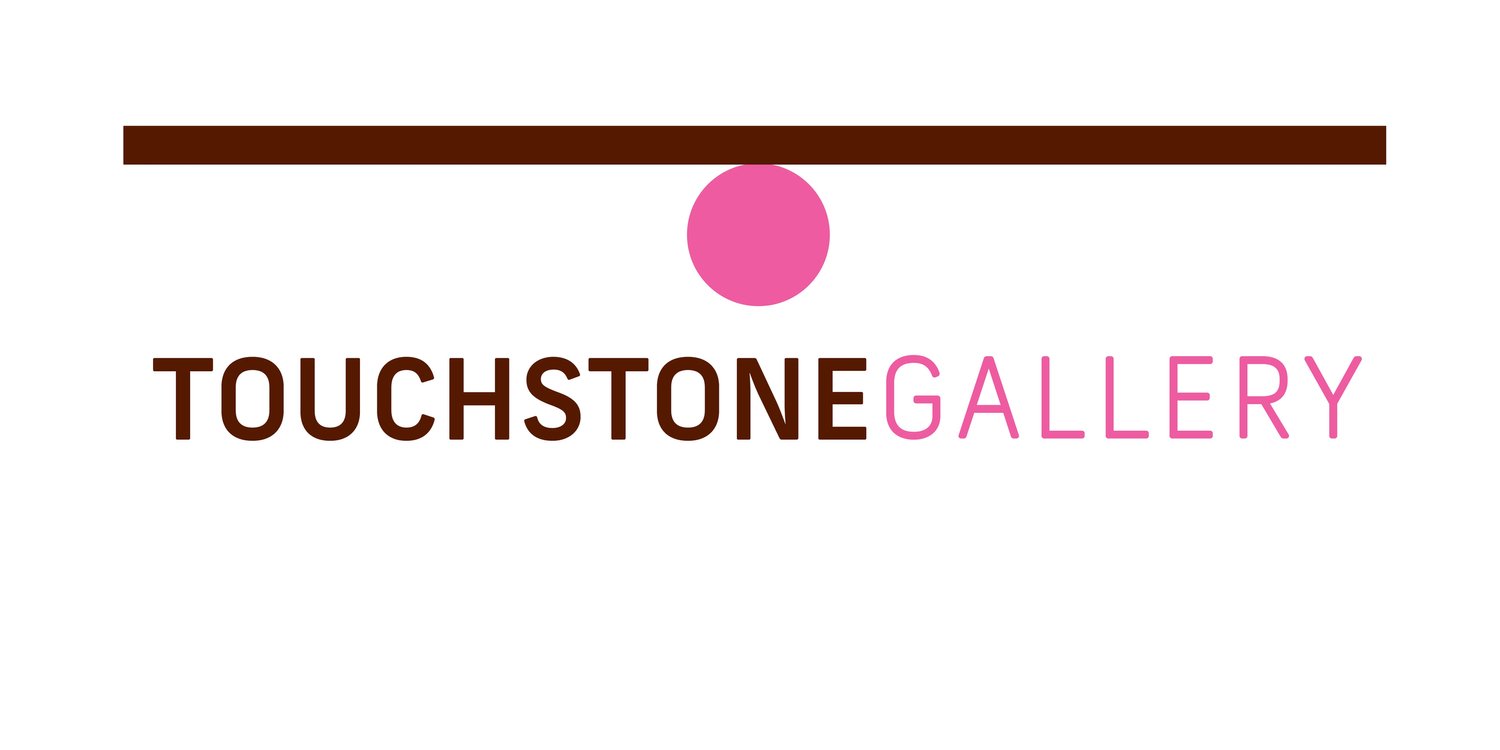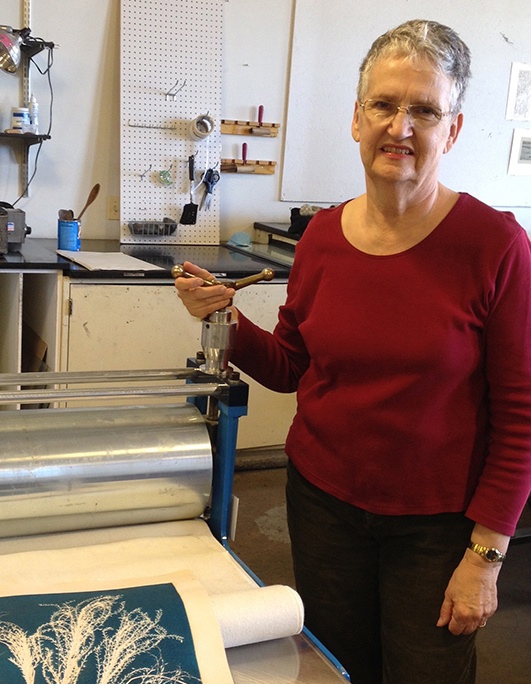Why does a painter become a printer? Why does an artist choose any medium? “It allows me to create the images I want to create,” says Mary D. Ott. Originally a painter, Ott was unimpressed the first time she was introduced to a printing technique, the monotype, in a painting class. “I couldn’t understand why a person would go to all that effort of creating an image and only printing it once.” Nevertheless, she eventually signed up for a class at the Corcoran School of Art and found monotype to be very expressive. Inspired, she studied etching and other printing techniques. While she never gave up painting, she became a skilled printer as well.
Branching Out, Ott’s May 2019 show at Touchstone Gallery, is a tour-de-force of etching and lithographic techniques. Building on the series of paintings and prints featuring grasses that she has worked on for the last few years, she branches out in an exploration of trees. “Trees fascinate me,” Ott says. “Their nearly infinite variety of shapes, sizes and colors provide many subjects for photography, drawing, painting, printing and other media.” Her love of nature is evident in the carefully crafted abstract and figurative images of trees, their parts and their forests.
Etchings Reveal the Gesture of the Tree
American Elm II, Etching with aquatint and soft ground
“The challenge in creating an image of a tree is similar to the challenge in creating a figure drawing—the artist needs to represent the gesture of the subject,” Ott says. “Early springtime when trees have newly-opened leaves is a great time to observe the structure of trees.”
To the non-printer, the printing process sounds daunting. Some images in the show are etchings. An etching is created from a printing plate, usually zinc or copper. In order to produce lines, the plate is covered with a “ground” that will resist the acid, and lines are drawn into the ground. The plate is then immersed in an acid or other etchant. When coated with ink, the etched plate forms the image to be printed. The aquatint process is a variant of etching that produces areas of different tonal values, or lightness or darkness, instead of lines. The image may also be created by drawing directly on the plate with a sharp implement, a method called drypoint. Printers may use more than one plate to apply different colors to an etching, and each plate can be used multiple times to create a series of prints of the same image.
Mirror Images, Etching with Aquatint
“Although lying on the ground, dry and curled, leaves can be beautiful,” Ott says. The etching process manages to capture the delicacy of the leaf’s structure and the sensuous nature of its shape.
Lithographs Capture Variations in Value
Branches IV, Unique Paper Plate Lithograph
Many of the images in the show are lithographs. A lithograph is created by printing from a flat surface. Most of the lithographs in this show were created using a paper plate. Ott first processes a color digital photograph in Photoshop to create an image with variations in value (lightness and darkness) and other desired characteristics. Then the image is converted to black and white and printed with a laser printer. This printout becomes the paper plate. She carefully applies a gum arabic and water solution to the plate, then rolls etching or lithographic ink over the plate. The gum arabic prevents the ink from adhering to the white parts of the image. She prints the inked plate on fine art paper using a printing press. Although it is sometimes possible to print a second copy of a paper plate lithograph, Ott prefers unique prints.
“While walking along wooded paths or riding in a car, I focus on the individual trees,” Ott says. “But I also see the forest. Trees grow differently if they stand alone or are surrounded by other trees. The setting influences the growth of the individual tree, as society influences the development of each person.” The lithographic process captures subtle details, as in the image Branches IV.
Looking at one of Ott’s prints, it is easy to see the influence of her education as a physicist in the precision and detail of the images. In talking with her about the process of printing, her experience as an educator becomes apparent. But standing in a gallery surrounded by her work, one sees the heart of nature and the soul of an artist.
Mary D. Ott, Artist, Printer
###





